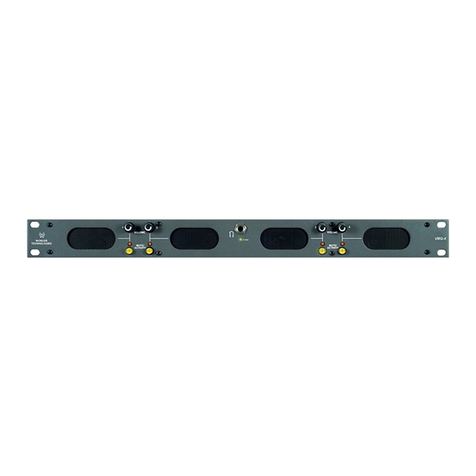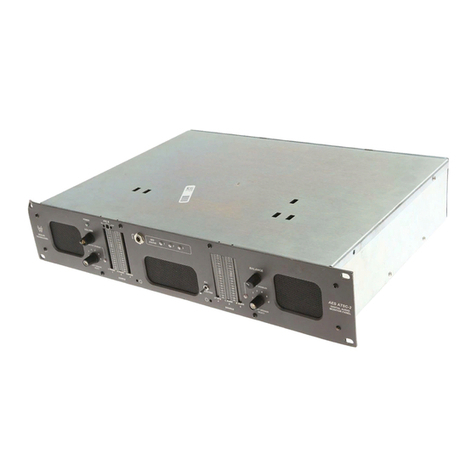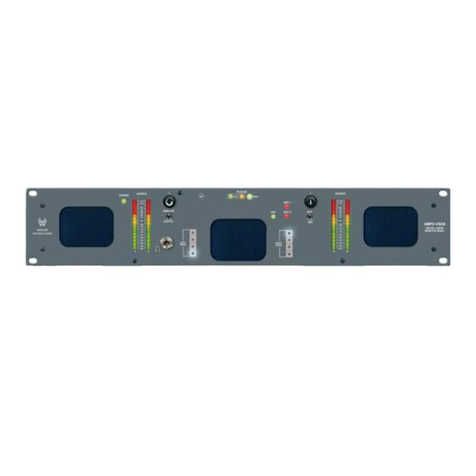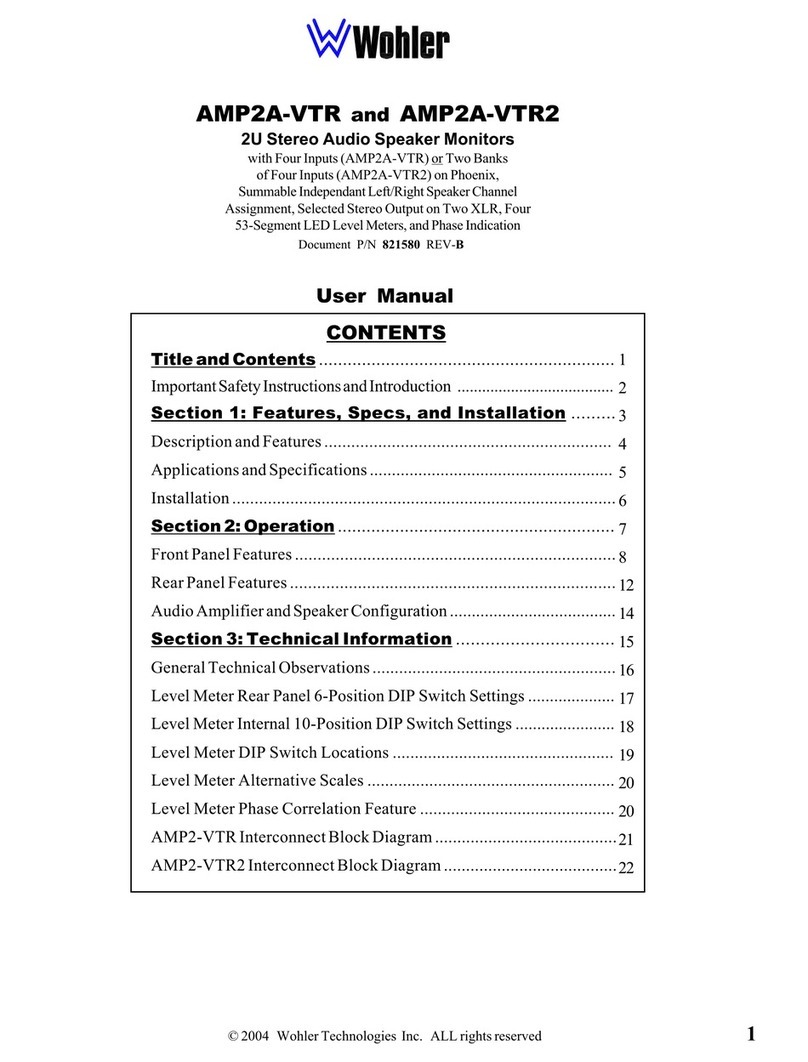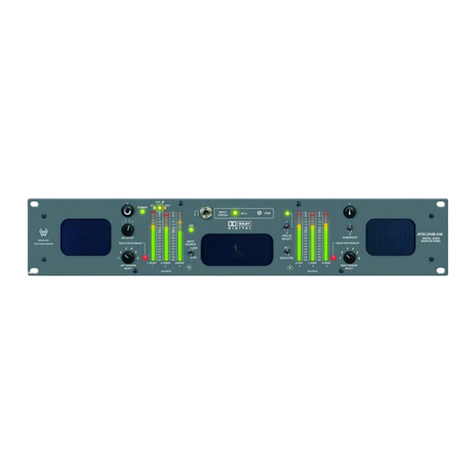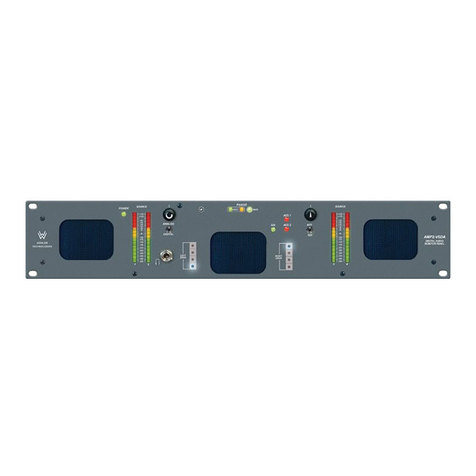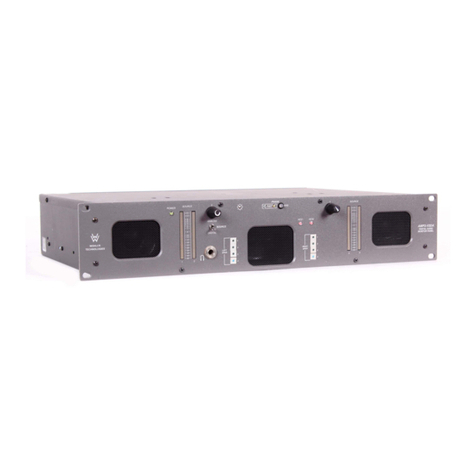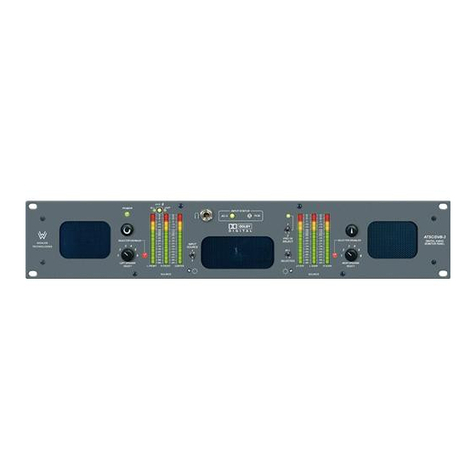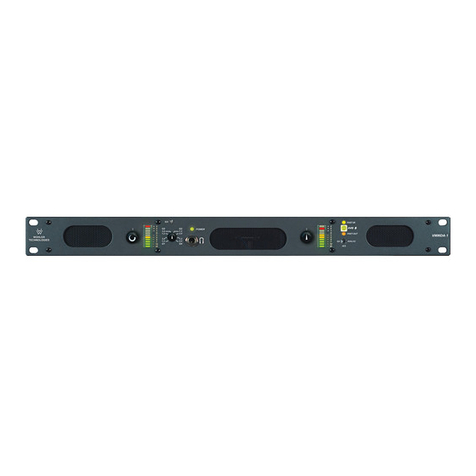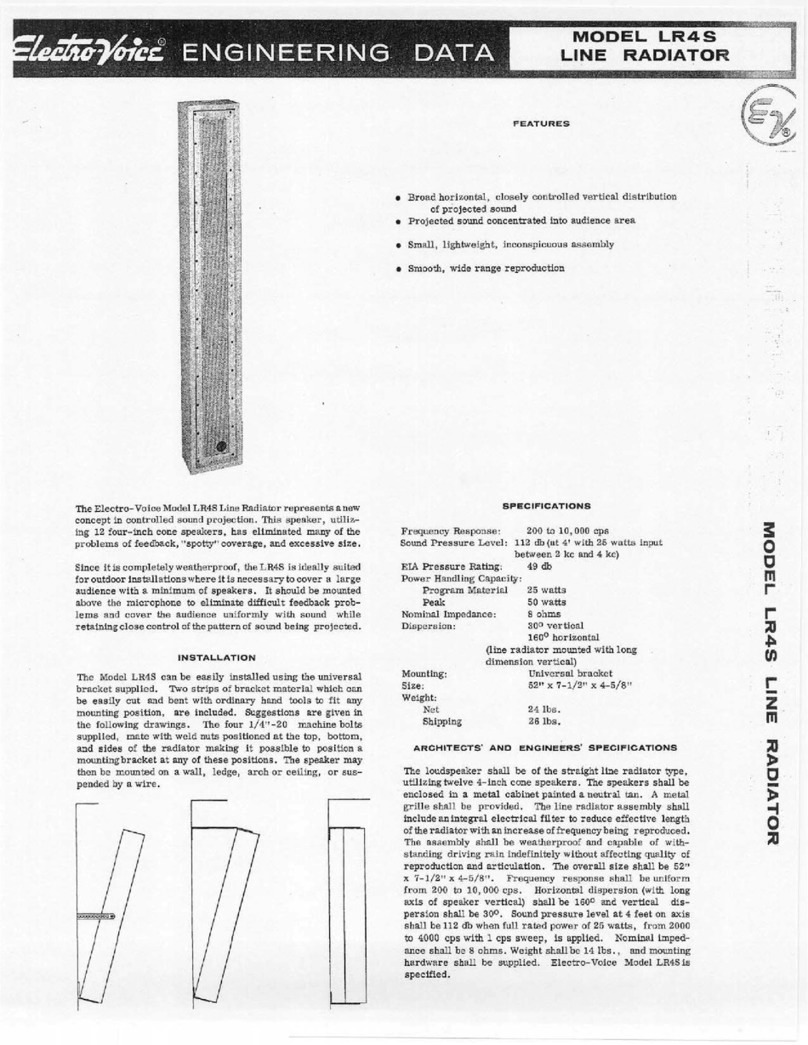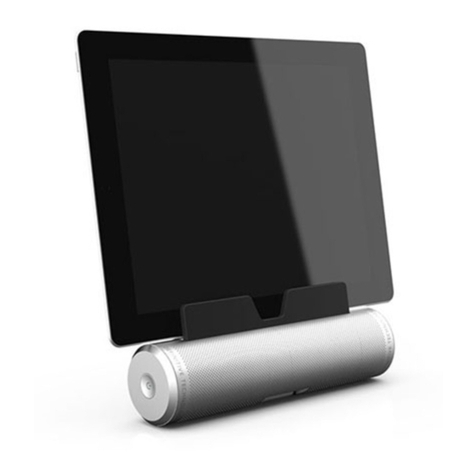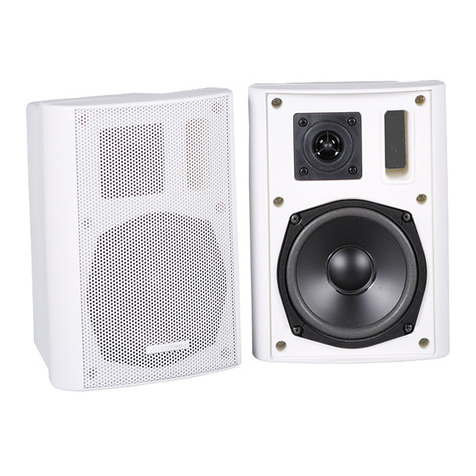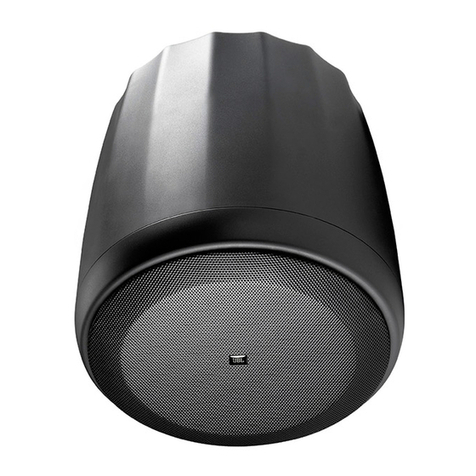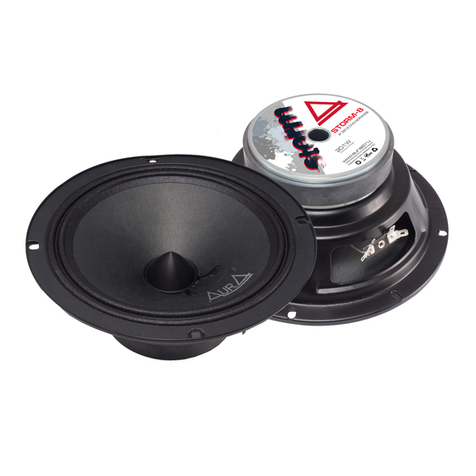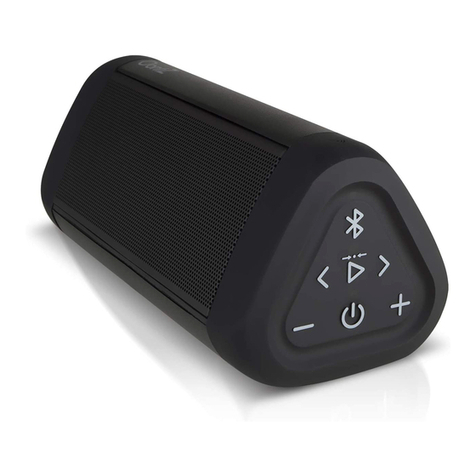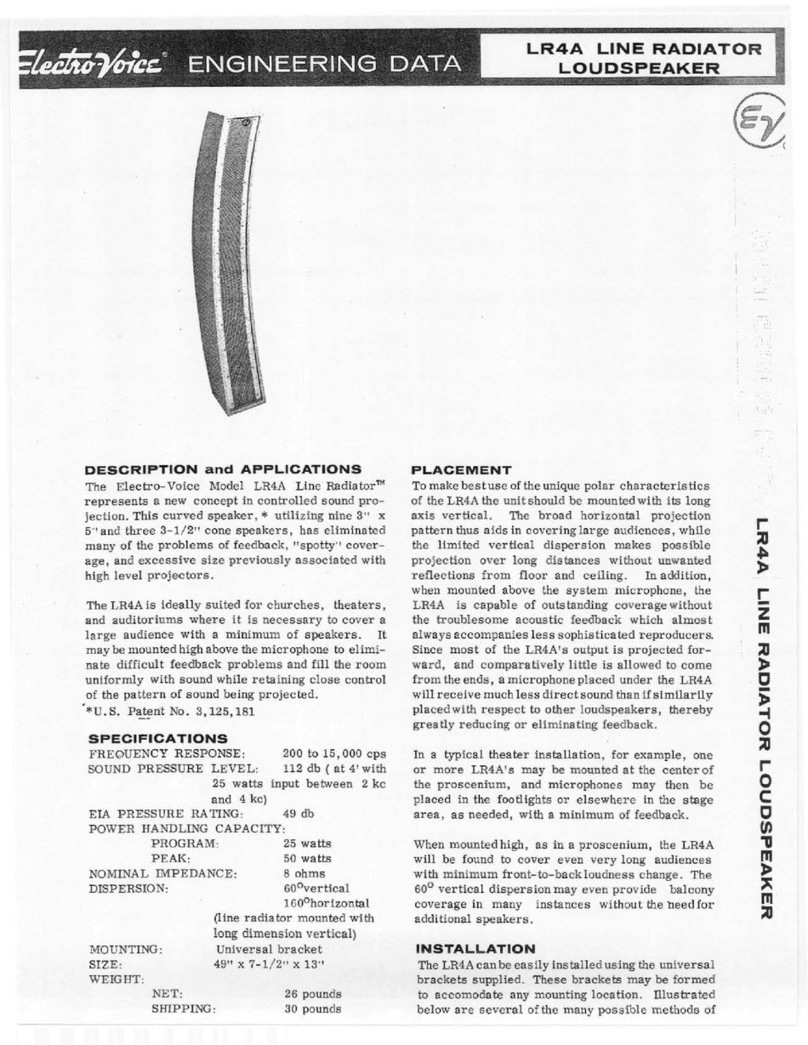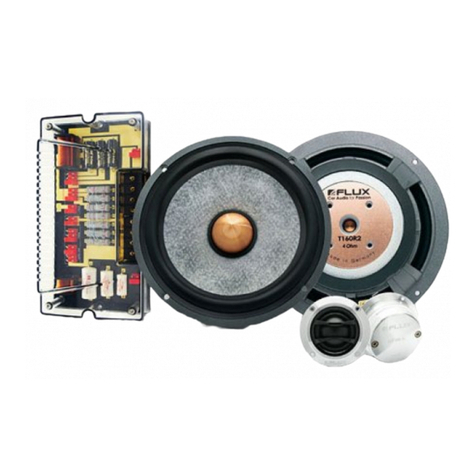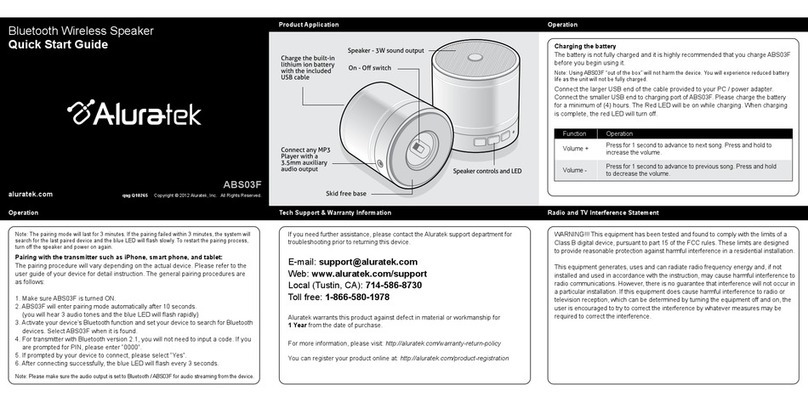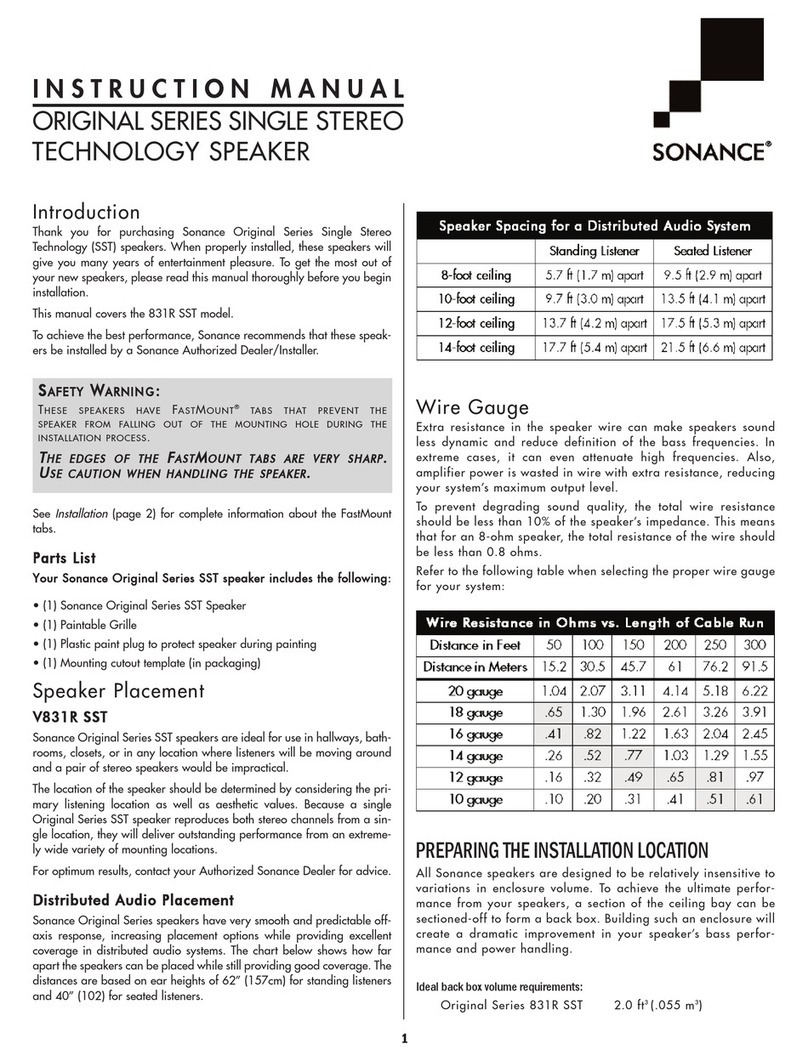
8© 2006 Wohler Technologies Inc. ALL rights reserved
AMP1A-4S/-10S/-LP4S/-LP10S User Manual P/N 821527 Rev-B
Please refer to Figure-2a on the following page to familiarize yourself with the front panel features of the AMP1A Series units covered
by this manual. The following sections describe these functions and are referenced, by number, to Figure-2a.
Section 2: Operation
Front Panel Features
1Speakers
The AMP1A Series internal speaker system is comprised of two mid-range tweeter speakers (left and right) and two woofer
speakers (left and right). The two mid-range speakers reproduce, in stereo, only the mid and high frequencies, while the two
woofer speakers monorally reproduce the low frequencies.
2 Volume Control - Rotary Pot
This controls the loudness of the audio reproduced by the internal speakers or connected headphone. Clock-wise rotation of
this control increases the loudness of the monitored audio.
3Headphone Output - 1/4" Jack
Select the headphone audio sources as you would for the internal speakers. When you plug in headphones, the internal
speakers will mute. This jack accepts a standard 1/4” phone type stereo plug.
4Power Indication - Green LED
This LED glows GREEN to indicate the AMP1A Series model is connected to operational mains power.
5Balance Control - Rotary Pot
This pans the volume balance between the left and right speakers. If the balance is adjusted hard left or hard right, a slight left/
right channel mix is retained (only in low bass frequencies) so that phase discrepancies can be discerned.
6Source Select Switch - 4-Position or 10-Position Toggle Switch
This switch selects, from the multi-channel inputs, a single stereo audio source (2 channels) for monitoring through the unit.
The 4S models use a 4-position rotary switch for source selection, while the 10S models use a 10-position rotary switch for this
function.
7Audio Level Meters - 10-Segment LED Bargraph Displays
(AMP1A-LP4S and AMP1A-LP10S Only)
Audio levels are visually displayed via these two 10-segment, tri-color (red, amber, green) LED bargraph display level meters.
Bargraph 1monitors Channel A(left) while Bargraph 2monitors Channel B(right). These meters are able to simultaneously
display signal levels using both PPM and VU standards. Alternate display modes are user selectable via a DIP switch module
accessible through the top cover. See page 15 for settings and page 16 for specifications of these meters .
8Phase Indication - Bi-Color LEDs (red/green)
(AMP1A-LP4S and AMP1A-LP10S Only)
These three LEDs indicate the instantaneous and average phase (polarity) conditions between the pair of channels
selected for monitoring in the Left/Right channel speakers. The larger LED labeled AVG indicates the average phase
condition between the two signal sources. The two smaller LEDs indicate the instantaneous phase relationships.
Indication is as follows:
•The smaller "fast" in-phase (ΦΦ
ΦΦ
Φ+)LED glows (or blinks) GREEN for in-phase signals.
•The smaller "fast" out-of-phase (ΦΦ
ΦΦ
Φ-)LED glows (or blinks) YELLOW for out-of-phase signals.
•The larger AVG LED indicates average phase condition; GREEN for in-phase signals, RED for out-of-phase signals.
In general, observing the AVG LED alone is sufficient for proper phase monitoring. While it is normal for stereo signals
to contain some intermittent instantaneous out-of-phase and in-phase conditions (FAST LEDs), a steady RED glow of
the AVG LED indicates an out-of-phase alarm condition.


